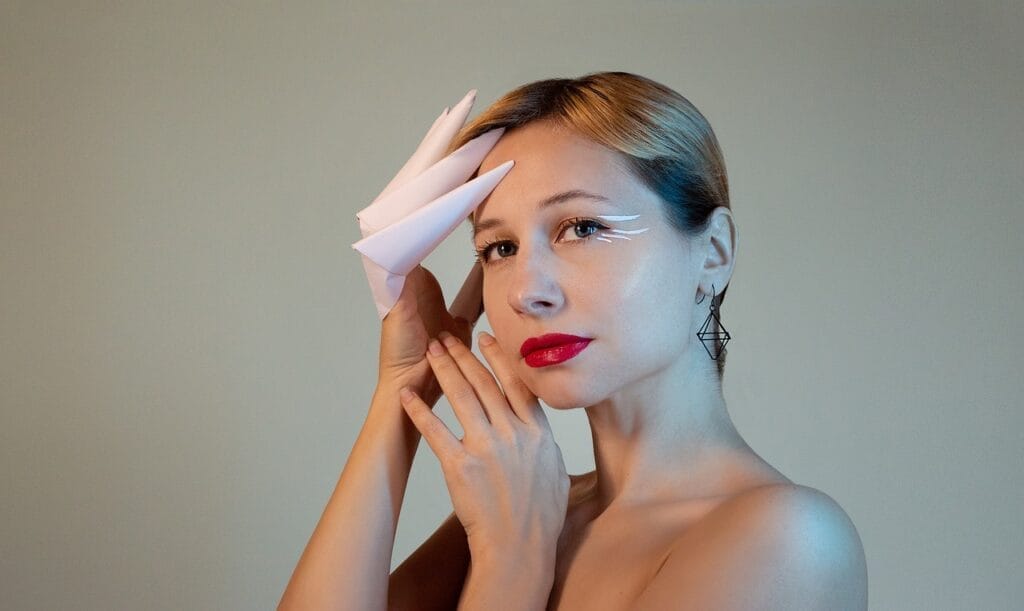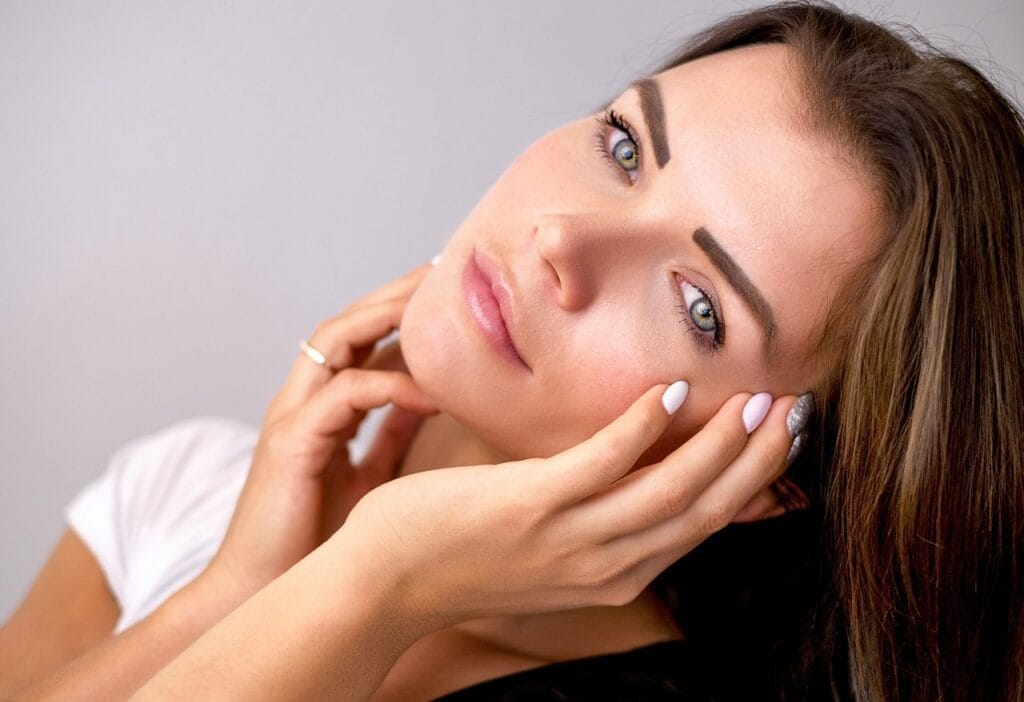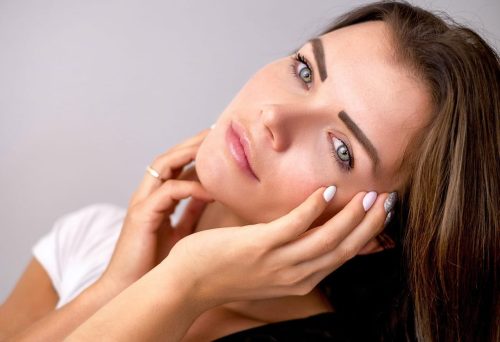Human beings have always been fascinated by the proportions and beauty of the face. The concept of beauty has always been popular among people, from ancient Greek sculptures to current beauty standards. Faces adhering to the golden ratio were particularly considered beautiful and were often reflected in the art of their time.

 4.7
4.7
Would you like to receive information about the operations from Vanity Doctors?
As Vanity, we can give you information about the operation you are considering.
Ask the DoctorEven today, facial characteristics that align with the golden ratio continue to hold significance in the beauty industry. For this reason, people have wondered about the proportionality of their faces and often resorted to various methods to achieve this ratio. For that reason, cosmetic surgery plays a critical role in blending science and art to reflect the golden ratio in people’s faces.
What Is the Golden Ratio? What Is Its Role in Facial Proportion?

Some proportions are universally appealing, even though concepts of beauty can vary greatly throughout cultures and historical times. The golden ratio, fundamentally a mathematical notion, has preserved its place among all these different perceptions of beauty. It serves as a universally accepted criterion for facial beauty, blending mathematics and aesthetics. The golden ratio helps determine the proportion of facial characteristics. It can also be used as a guideline by experts for cosmetic operations, where they seek to improve facial harmony and balance.
What to Consider When Defining the Golden Ratio Face?
The golden ratio is calculated considering the proportions and symmetry of various regions of the face in relation to each other. Essentially, the face’s length is divided by its width, and the optimum result for the golden ratio is approximately equal to 1,6.
Guide to Calculating Ideal Facial Proportion
In particular, three areas of the face are measured to obtain ideal facial proportions. These are:
- Between forehead and eyes: Measure from the hairline on your forehead to the space between your eyes.
- Between eyes and nose: Measure from the space between your eyes to the base of your nose.
- Between nose and chin: Measure from the base of your nose to the bottom of your chin.
Ideally, these three measurements should be approximately equal, suggesting a ratio that closely corresponds to the golden ratio.
Who Wants to Obtain Golden Ratio for Facial Proportion?
People commonly pursue facial improvements or cosmetic surgery operations for a variety of reasons, including improving their self-image and boosting self-confidence. During these procedures, they frequently seek results that align with the golden ratio to achieve a more visually appealing and harmonious look. While the desire for facial improvement transcends gender, there may be variations in the features that constitute attractiveness between men and women. For instance:
Masculine Features for Golden Ratio Face
l Cornered and chiseled facial features that contribute to a strong, masculine appearance.
l Thick brows that frame the eyes and create a striking look.
l A firm and sharply sculpted jawline that enhances the masculine golden ratio of the face.
l A well-groomed beard or stubble that can accentuate the jawline and enhance the overall face shape.
Feminine Features for Golden Ratio Face
l Round and smooth facial features that exude the warmth of a feminine gaze.
l Plump and well-shaped lips that enhance the feminine appearance.
l Larger, doe-like eyes that are associated with emotional depth and expressiveness.
l A small and lifted nose that draws attention and enhances facial harmony.
Which Cosmetic Procedures Are Commonly Used for Golden Ratio Facial Proportion?

Numerous cosmetic surgeries are designed to enhance different components of facial attractiveness to achieve the golden ratio in facial proportion. Some of the most commonly used ones are:
Rhinoplasty: Also referred to as a “nose job in Turkey,” this cosmetic procedure improves the size and shape of the nose by modifying the skin, cartilage, bone, or any combination of these. There are several rhinoplasty surgeries carried out using distinct techniques, including closed and open rhinoplasty.
Blepharoplasty: Also referred to as eyelid surgery in Turkey, this operation is used to remove excess fat or skin from one or both upper and/or lower eyelids. The main goals of blepharoplasty surgery are to improve the look of the eyelids and the face as a whole.
Facelift: Also called rhytidectomy, this operation reverses the appearance of aging in the face and neck by relocating or removing skin, fat, or even muscle. This procedure tightens and lifts the skin to reduce wrinkles and sagging, enhancing overall facial structure.
Lip Augmentation: This cosmetic procedure makes lips appear fuller, more enhanced, and well-countered. Various forms of lip augmentation, including fat grafting, lip implants, and lip fillers are available to meet specific demands and objectives.
Chin Augmentation: This technique is used to enhance the chin proportion to achieve a more balanced facial profile. This is often achieved by simply placing an implant far below the skin’s surface on the chin bone.
Otoplasty: Also known as ear surgery in Turkey, this procedure is performed to repair structural ear problems to achieve balanced facial proportions. Without affecting a person’s capacity to hear, this reshaping technique can give an individual’s ear a more natural aesthetic look.
Bichectomy: Also known as buccal fat removal in Turkey, this cosmetic procedure eliminates the fat pads that form between the jawline and cheekbones. Reducing buccal fat primarily aims to improve facial bone structure and shape the face.
Brow Lift: This cosmetic surgery raises the brow and reduces wrinkles by realigning the forehead. Tightening the upper face region naturally can restore a youthful look.
What Should Be Considered Before Have These Procedures Done?
Before undergoing a facial procedure aimed at achieving the golden ratio, there are a few things you should consider. Such as:
- Examining the expert’s competence, reputation, and also experience in the field.
- Ensuring that the clinical facility, like clinics in Turkey, is accredited and adheres to high hygiene and safety standards.
- Reviewing the expert’s portfolio and looking at before and after pictures of previous operations to evaluate the specialist’s work.
- Arranging a consultation to talk about your goals, ask questions, and get a feel for the expert’s communication style.
- Receiving comprehensive information on all expenses, including any possible extra charges such as additional pre-and post-surgical care options.
Resources
https://www.webmd.com/beauty/choosing-cosmetic-surgery
https://my.clevelandclinic.org/health/treatments/10784-brow-lift
https://my.clevelandclinic.org/health/treatments/11021-otoplasty-ear-reshaping
https://med.stanford.edu/drmost/aesthetic-services/procedures/chin-augmentation.html





